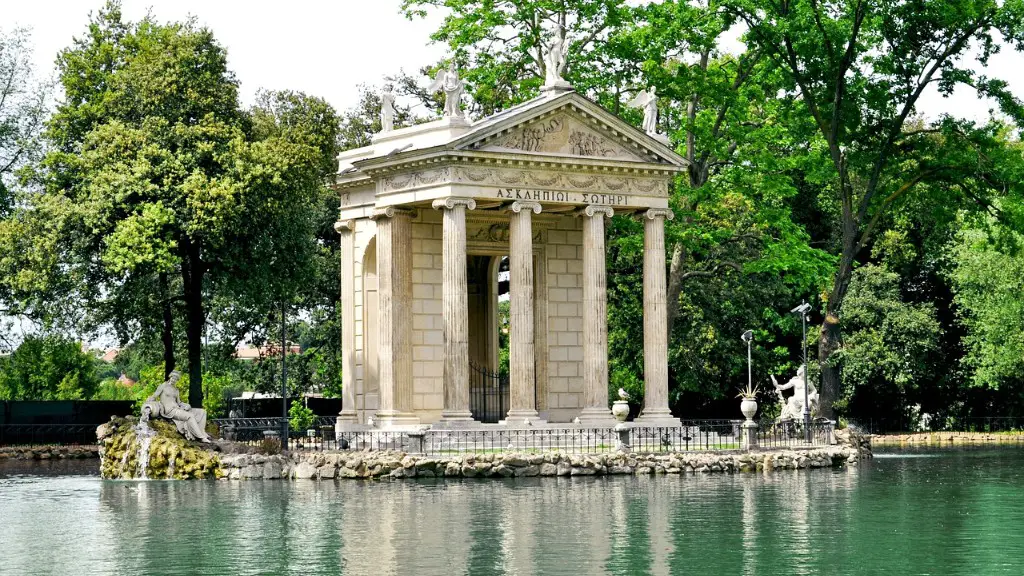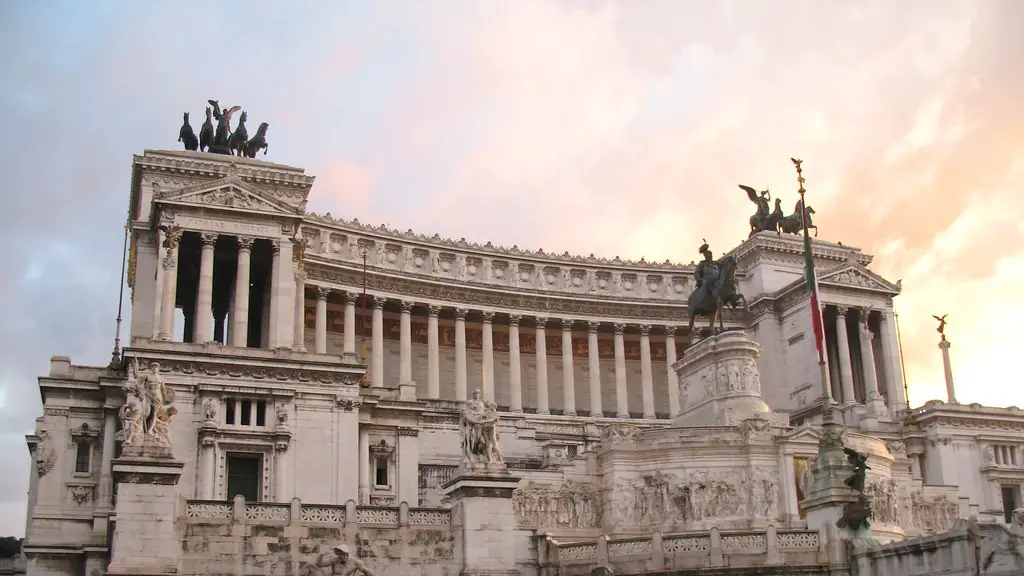Ancient Rome was built by the Latin peoples (Latins) around the 8th century B.C. At that time, it was a small agricultural community; it eventually developed into what we know today as the Roman Empire, one of the most important civilizations in human history. Rome was the center of Western civilization for hundreds of years, and had a direct and profound influence on modern society.
The Latin peoples first founded the city of Rome in 753 B.C. and it soon became the administrative capital of the Latin League—a confedernation of Italian city states. As its power and influence grew, Rome became an imperial power and by the Third Century B.C., Rome had conquered the whole of the Italian peninsula.
In the 1st century B.C., Rome was the Republic’s most powerful city and the de facto center of the Western World. Under the leadership of Julius Caesar, who was assassinated in 44 B.C., Rome became the Roman Empire, a period of massive expansion for the Roman Republic. During this period, Rome conquered other territories, such as Greece and Egypt, and annexed them as provinces. At its peak, the Roman Empire covered over 3 million square miles.
While most of the Roman Empire was located in Europe, its influence was felt in North Africa, the Middle East, and even as far as India and Central Asia. Rome established a unified legal system and codified laws, and its language, customs, and religion spread throughout the empire. Historians consider the Roman Empire to be among the most advanced and influential civilizations in history.
The Roman Empire lasted until 476 A.D when it was weakened by the Germanic invasions and divided into two empires, the Western and Eastern Roman Empires. The city of Rome continued to be the heart of the Western Roman Empire until it was sacked by the Visigoth Alaric in 410 A.D. The Eastern Roman Empire, however, continued until the fall of Constantinople in 1453.
The legacy of ancient Rome can still be seen in modern society. The Latin language was the official language of the Roman Empire and is still used today in the form of Spanish, French, and Italian. Many of Rome’s engineering feats, such as the Colosseum and the Pantheon, have stood the test of time and are still popular tourist attractions today. Roman law is the basis of most contemporary law systems, and the Latin alphabet is used around the world. Ancient Rome’s political and economic concepts still underpin the current international system, making it clear that the Roman Empire has left an indelible mark on society.
Roman Infrastructure:
One of the most impressive aspects of Ancient Rome was its infrastructure. Rome had a complex network of aqueducts, roads, and bridges, as well as a highly efficient postal system. Its roads were evenly paved and easily traversed by foot travelers and merchants alike. Roman cities were well laid out, with regularly laid out streets, public squares, and tightly packed insulae for the urban population.
Rome was also known for its architectural achievements. The Pantheon, the Colosseum, and the Forum are some of the most impressive examples of Ancient Roman architecture. The Pantheon was a temple dedicated to all the gods, while the Colosseum was a stadium where gladiatorial games and chariot races took place. The Forum was a marketplace where people would gather to buy and sell goods.
The Romans were also skilled engineers. They constructed aqueducts that supplied the city with water and built an extensive sewage system. The Romans were also the first to construct a system of public baths, and their engineering advances set the stage for modern urban development.
Legacy of Roman Religion:
Not only did the Romans build impressive infrastructure, but their religion was also influential for centuries. Roman religion focused on polytheism and was centered around deities such as Jupiter, Neptune, Mars, and Minerva. Roman religion also incorporated elements from Greek religion, such as the goddess Venus and the god Apollo.
In addition to their gods, the Romans also believed in many different myths, such as a creation story where Romulus and Remus, twin brothers, were left in the care of a she-wolf, who raised them and taught them to use the land they settled as the basis of their new city. This creation story has been used throughout the centuries to explain Rome’s origin.
Roman religion also included ancestor worship and the veneration of household gods. Temples were built to honor the gods, and public ceremonies and festivals were held each year in their honor. Religion played an important role in everyday Roman life, and its influence still lingers today, as many modern religions have their roots in the ancient faith of Rome.
Agricultural and Military Achievements:
The Ancient Romans were also a pioneering people. They had a highly developed system of agriculture, which allowed for a diverse range of crops to be grown, trade goods to be exported, and wine to be produced. Ancient Roman military was also immensely powerful, with legions fighting across the entire Mediterranean. The victories of Julius Caesar, Marcus Aurelius, and Augustus are still celebrated today, and the Roman Republic and Empire were unmatched in terms of power and influence.
The Roman Empire was a powerful and sophisticated state that sustained its own culture and laws for centuries. Its engineering feats and political, economic, and technological achievements were instrumental in laying the foundations of the modern world. Ancient Rome was undoubtedly a great civilization and its legacy still lives on.
Roman Art and Architecture:
The Ancient Romans left many works of art and architecture that still stand today. Sculptures and mosaics adorned public buildings and private homes, telling stories of tragedy and triumph. Roman artwork was often used to commemorate battles and victories. Rome is also home to some of the world’s most stunning architectural achievements, such as the Colosseum and the Pantheon. These buildings were designed to be imposing, impressive, and historically significant.
Roman Art and Architecture is also a source of inspiration for modern art and architecture. Many of the techniques and materials used in Classical Roman designs can be seen in modern-day buildings and sculptures. The influence of Ancient Rome on modern-day design is undeniable, and it is safe to say that much of our current aesthetic has been shaped by the artistic genius of the Romans.
Roman Latin and the Legacy of Language:
Latin was the language of the Roman Empire and was the lingua franca of Europe for centuries. It is still used today in many forms, including Spanish, French, and Italian, as well as various dialects in various parts of Europe. Latin was also an important part of the Roman educational system and was used as a legal and commercial language. The influence of Latin on modern languages is undeniable, and it is still considered the basis of most Romance languages.
In addition to its influence on modern languages, Latin has also played a key role in one of the most influential books in history: the Bible. Latin was the language in which early manuscripts of the Bible were written, and it is still used in the Catholic Church today. It is also used in the lyrics of some of the most beloved hymns.
Latin had a powerful influence on Western culture and continues to do so today. From its use in scholarly texts to its influence on modern languages, Latin has been an important source of communication and knowledge since time immemorial.




